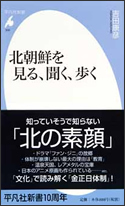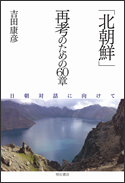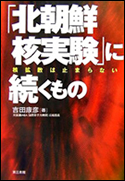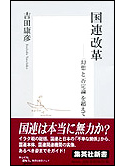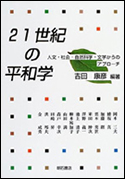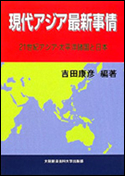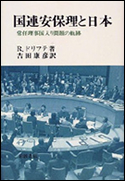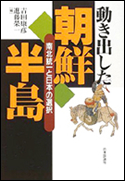2004年5月28日
【5】History of Humanitarian Assistance to North Korea (May 2004)
The 1995 floods usher in international humanitarian aid to North Korea
Humanitarian assistance to the Democratic People's Republic of Korea (DPRK) is rather new. It started in October 1995, when a joint UN appeal for emergency food aid was issued after a fact-finding UN mission visited the country devastated by extensive floods damaging the nation’s main crops, rice and corn. The floods were triggered by a long spell of unusual heavy rainfalls which lasted for three weeks in late July and early August mainly in the central part of the country. Until then, cooperative relationship between the UN and DPRK was practically non-existant, except for the presence of a small office of the United Nations Development Programme(UNDP) in Pyongyang.
The disaster served as an opportunity for the politically isolated socialist country to open its door to the outside world, allowing UN aid agency and Red Cross officials as well as a small number of Christian volunteers and NGO workers from other regions of Asia and also from Europe to stay for months in Pyongyang to ensure a sustained supply of food and other daily necessities for human life.
Japan has yet no diplomatic relations with DPRK. Therefore, the visit of Japanese nationals to that country had for a long time been limited to Opposition Socialist Party members, labor union leaders and socialist scholars and intellectuals. Nevertheless, I was one of the first Japanese that visited Pyongyang in December 1995, at an early stage of international humanitarian assistance to DPRK. On behalf of the Association to Aid Refugees, a Japanese NGO usually engaged in aid to refugees, I took with me a shipload of 25,000 eggs and 10,000 apples,--a donation to kindergarten infants and orphans in the flood-devastated area in the central part of North Korea I was welcomed everywhere.
Why eggs and apples, instead of rice? Because the then South Korean President, Kim Yong-sam, opposed rice and corn aid to DPRK on the ground that such staples could be diverted as reserve food for the soldiers, thus resulting in an increased threat to the South. Still soon after the collapse of the Cold War structure, the North and South remained staunch rivals to each other. The Japanese government had decided to make 500,000 tons of rice in donation as emergency aid to DPRK in response to the UN appeal, but was protested by the Kim Yong-sam regime in Seoul.
It was since 1998, when Kim Yong-sam’s successor, Kim Dae-jung, assumed presidency in Seoul with a new rapprochement “sunshine” policy, that tension was eased on the Korean Peninsula, paving the way for full-scale economic aid from the south to the north. Kim Dae-jung held a historic north-south summit with DPRK leader Kim Jong-il in Pyongyang in June 2000. A large number of South Korean NGOs were hereafter allowed to visit the north with food and other humanitarian aid materials.
On the basis of my first-hand knowledge and information accumulated during my visit to the flood-devastated areas, I created a new NGO, the Association of Humanitarian Aid to DPRK, in September 1998, with a view to maintaining constant aid activities in a long-term perspective, as the country was by that time known to be suffering from perennial food shortages.
Japanese NGOs identified as suppliers of humanitarian aid to DPRK
It was in at the end of June 2000, that a total of 16 Japanese NGOs and religious organizations concerned created,, for the first time, a liaison body for an exchange of information and hosted in Tokyo an international conference on humanitarian assistance to DPRK, inviting nearly 100 participants to learn from their on-the-spot experience. The participants were UN officials, such as those of the World Food Programme(WFP), the United Nations Children’s Fund (UNICEF) and the United Nations Development Programme(UNDP), and European and Canadian NGO representatives stationed in Pyongyang, as well as South Korea’s Christian and Buddhist volunteers newly engaged in aid activities for DPRK.
The 16 Japanese organizations were;
(1) Asian Conference on Religion and Peace (ACRP)
(2) AFM (Agriculture, Food and Medicines), (supra-partisan humanitarian NGO of retired politicians)
(3) Ayus Buddhist International Cooperation Network, (Ayus means “life” in Sanscrit) (4) Caritas Japan (Catholic national organization)
(5) Association of Humanitarian Aid to DPRK, (my own NGO)
(6) Shanti International Voluntary Group (Buddhist organization for humanitarian aid programs)
(7) Korean Youth Union (youth group of the pro-Seoul Korean residents in Japan)
(8) Korean Association for Democracy and Human Rights (radical group of pro-Seoul Korean residents in Japan)
(9) Tree of the Earth (Japanese women’s group)
(10) Association to Send Eggs and Bananas (Apples) to Korean Children
(11) Japan Medical Relief Organization (medical doctors’ group)
(12) National Christian Council of Japan (Protestant)
(13) Japan InternationalVolunteer Center(JVC)?one of Japan’s biggest NGOs
(14) Peace Winds Japan (more active in Iraq, Afghanistan and Africa)
(15) Peace Boat
(16) Love and Peace
An informal monthly liaison meeting has been held in Tokyo since the international conference to inform each other of mutual experience and coordinate activities. Representing my own NGO, I am a regular participant in the monthly meeting.
However, those NGOs and various religious organizations engages in aid activities have been on the decline, especially since the abduction of Japanese nationals by North Korea’s agents was officially admitted by North Korea’s leader Kim Jong-il in September 2002, when Japan’s Prime Minister Jun-ichiro Koizumi visited Pyongyang to sign a joint Japan-DPRK declaration. The whole of the Japanese nation burst into anger and indignation, above all with DPRK’s announcement that eight of the 15 officially-identified Japanese abductees all died unnatural deaths, with one girl committing a suicide. The five, two couples and one woman married to a defected American soldier, returned to Japan, but their children were forced to remain in North Korea despite the parents’ wishes to recover them to their homeland. Their return home was realized on 22 May 2004, when Prime Minister Koizumi made a surprise visit to Pyongyang for a top-level deal with Kim Jong-il, second in 20 months.
The abduction case constitutes a main stumbling block in the long-pending normalization of diplomatic ties between Japan and DPRK. The whereabouts of the 10 Japanese abductees who DPRK had announced dead remain dubious. Two daughters of the woman married to the American defector are still left in Pyongyang
Against this background, about one half of the above-listed 16 Japanese NGOs and religious organizations have withdrawn their aid programs from DPRK, and the volume of the aid materials brought by the remaining NGOs has been decreasing due to the shortage of funds collected from among the public.
My own organization has so far contributed a total sum of 2,000,000 yen in cash and medicines to the WFP office in Pyongyang and North Korea’s Red Cross Society since 1998. The JVC, in the mean time, presented two sets of solar electricity generating system in two primary schools, one each on the outskirts of Pyongyang, amounting to 8,000,000 yen in total value. Love and Peace, an NGO newly created by a Tokyo university professor, provided a wind-mill electricity generating device as a model clean energy source.
Obviously, there are several other local Japanese NGOs shipping food and medicines to DPRK, but the total amount is presumed marginal, mainly due to the loss in national enthusiasm in the neighboring dictatorial regime. Therefore, I have shifted my strategy and concentrated my efforts to raise Japan’s public awareness for the need to normalize bilateral diplomatic relations in the interest of peace and stability of Northeast Asia, rather than merely to collect funds for procurement of aid materials.
Similar advocacy attempts were made in 2003 and 2004 by the JVC and several other NGOs in a joint venture to organize a traveling exhibit bringing together the drawings by primary school children of North and South Korea, as well as those in Japan. The exhibit, contributing to mutual understanding among the children in this region, has been displayed so far in Seoul and Pyongyang, as well as Tokyo, Osaka and several other Japanese cities. It was the first joint venture by Japanese NGOs in their activities related to DPRK.
Media reactions were generally favorable with a detailed coverage by major newspapers and television, presumably because of non-ideological cultural nature of the project. The Chosen Soren, the once militant and usually isolationist national organization of pro-Pyongyang Korean residents in Japan, were quite supportive of this venture, assisting in the materialization of the exhibit in Pyongyang. It goes without saying that the ChosenSoren has spearheaded a campaign in Japan to raise funds and ship rice and other foods as well as medicines to DPRK.
Under the present circumstances, South Korea’s NGOs and religious (Christian and Buddhist) organizations are more enthusiastic about assisting their northern neighbors. In 2003 alone, more than 10,000 South Koreans traveled to the North for humanitarian aid purposes, while the total number of Japanese visitors were limited to the level of less than 1,000.. North-south cooperation at a civil level is expected to win further momentum under the present Roh Moo-hyng regime.
The 2004 locomotive explosion accident likely to be another chance to open DPRK to the world.
On 30 April 2004, the representatives of a total of 10 Japanese NGOs assembled in a conference room in the National Diet Building in Tokyo, issuing a joint appeal for a fund-raising campaign on behalf of the victims of the Lyonchong locomotive explosion accident, leaving at least 160 people killed and some 1,300 injured.
The 10 organizations included not only humanitarian aid NGOs, but also politically-oriented organs, such as the National Association to Promote Normalization of Japan-DPRK Diplomatic Relations, headed by former socialist Prime Minister Tomiichi Murayama.. I also participated in the joint appeal.
They agreed to collect funds separately in their respective campaign and extend help in their own way through their established channels and connections, but jointly to urge the Japanese government to augment the level of its contribution to DPRK. In response to this appeal, Prim Minister Koizumi made a commitment to contribute 10,000,000 US dollars in medical supplies when he visited Pyongyang in May 2004. The government had initially decided to donate 100,000 US dollars in response to the UN appeal.
The accident is likely to serve as another occasion for DPRK suffering from a severe shortage of medical supplies to further open its door to the international community, accepting and appreciating humanitarian aid materials as well as human personnel. The initial Japanese aid, despite a comparative small value, was thanked by a DPRK official through its embassy in Beijing.
In March 2004, the Japanese Parliament enacted a bill to revise the existing law of foreign currency regulations, thus prohibiting remittance from Japan to North Korea eventually to put pressure on Pyongyang to agree to settle the abduction case, but the Japanese government has no intension to invoke it in fear of Pyongyang’s counterattacks. Therefore, private funds for humanitarian aid purposes have no regulations..
Delivery in cash to North Korean officials, however, is risky and dubious with a possibility that it could be diverted for other purposes. Most NGOs thus prefer transporting aid materials by ship from Japan to North Korea, and then distributing by themselves to the target people. The North Korean authorities have come to accept this method, though reluctant at the beginning as interference in their domestic affaires. In the case of cash donations, the most trustworthy channel is delivery to the UN aid agencies and the International Federation of Red Cross and Red Crescent Societies, both represented in DPRK.
A latest UN report estimates that the food shortage in DPRK has visibly improved with an increased harvest in recent years. However, roughly 1,000,000 tons of rice crops are reported in shortage every year, with about one third each filled in by commercial imports from Vietnam, Thailand and other Asian countries; by grant aid from China; and by humanitarian assistance from the international community through UN agencies. International humanitarian aid is therefore still indispensable.
Technical cooperation for agricultural reform by experts of the Food and Agriculture Organization (FAO) and the United Nations Development Programme (UNDP) has been in progress since the 1995 flood disaster. At present, more than 20 officials and experts from 10 UN agencies and international NGOs are allowed to be stationed in Pyongyang. However, not a single Japanese national is allowed to stay on, due to strained relations between Tokyo and Pyongyang.
The head of the WFP office in Pyongyang was allowed to drive to the site of the locomotive blast accident on 23 April, the following day of the disaster, and to take video shooting for world-wide distribution. The Pyongyang leaders are apparently more confident than before of the goodwill of the international community, which they now believe does not tend to topple the regime. . DPRK is in desperate need of foreign capital investment and modern technology to reactivate the nation’s economy for survival and ultimate peaceful reunification with ROK in the south. Kim Jong-il and his aides have come to realize that they could no longer remain with its door closed to the outside world to cope with a series of natural disasters and large-scale accidents, as well as the nation’s sluggish economy. They are now persuaded to win an eventual political survival, provided the nuclear weapons issue has been settled with the United States.. (2004/05/28)


